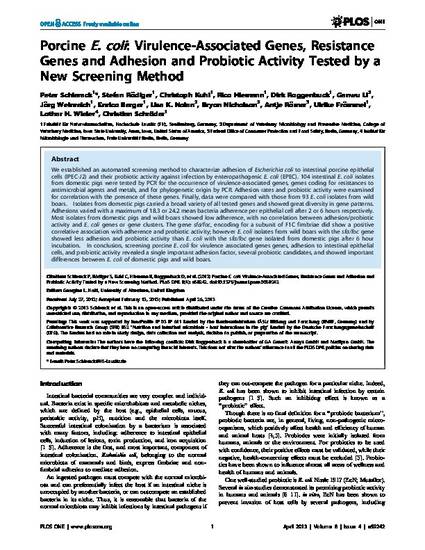
We established an automated screening method to characterize adhesion of Escherichia colito intestinal porcine epithelial cells (IPEC-J2) and their probiotic activity against infection by enteropathogenic E. coli (EPEC). 104 intestinal E. coli isolates from domestic pigs were tested by PCR for the occurrence of virulence-associated genes, genes coding for resistances to antimicrobial agents and metals, and for phylogenetic origin by PCR. Adhesion rates and probiotic activity were examined for correlation with the presence of these genes. Finally, data were compared with those from 93 E. coli isolates from wild boars.
Isolates from domestic pigs carried a broad variety of all tested genes and showed great diversity in gene patterns. Adhesions varied with a maximum of 18.3 or 24.2 mean bacteria adherence per epithelial cell after 2 or 6 hours respectively. Most isolates from domestic pigs and wild boars showed low adherence, with no correlation between adhesion/probiotic activity and E. coli genes or gene clusters. The gene sfa/foc, encoding for a subunit of F1C fimbriae did show a positive correlative association with adherence and probiotic activity; however E. coliisolates from wild boars with the sfa/foc gene showed less adhesion and probiotic activity thanE. coli with the sfa/foc gene isolated from domestic pigs after 6 hour incubation.
In conclusion, screening porcine E. coli for virulence associated genes genes, adhesion to intestinal epithelial cells, and probiotic activity revealed a single important adhesion factor, several probiotic candidates, and showed important differences between E. coli of domestic pigs and wild boars.
Available at: http://works.bepress.com/lisa_nolan/9/

This article is from PLoS ONE 8, no. 4 (2013): e59242m, doi:10.1371/journal.pone.0059242.